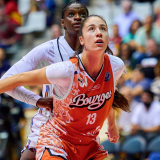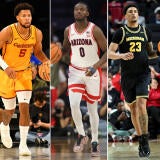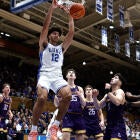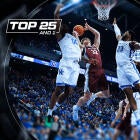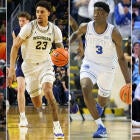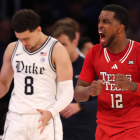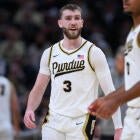March Madness bracket 2022: Having two lead guards on the floor can assist teams on NCAA Tournament title runs
Several of the last national champions have suited up two lead guards together
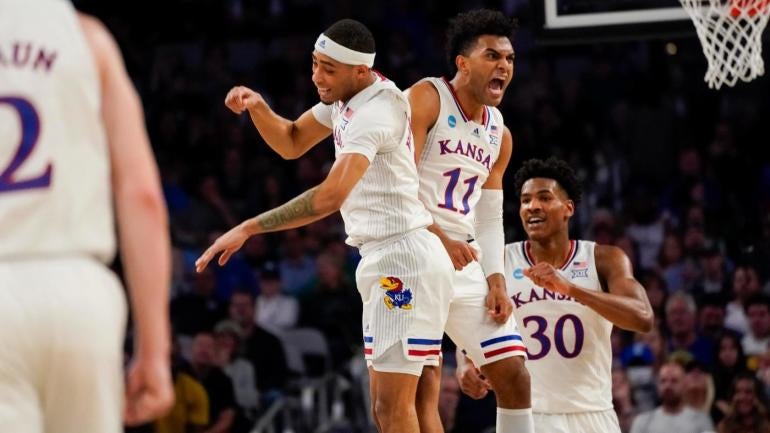
The NCAA Tournament used to be dominated by the best big men in the sport. But while having an elite big man certainly helps, for better or worse, the postseason has more recently been driven by guard play.
Tempo slows over the course of the season, often dipping during conference play and even more during March. That puts a premium on teams that can make the most of fewer possessions with efficient ball-handling, getting their teams into the right positions and taking advantage of the fewer transition opportunities and shooting.
"I think if I had my druthers, I would play three point guards every day. I have said all along, I would rather play four guards," Kansas coach Bill Self said after Kansas' Big 12 Tournament win over TCU. "I've changed my thinking, as long as one of them is big enough to defend a four and if one of them can be a lead guard. And the more lead guards you have is positive, as long as one of them has got to be able to shoot."
Four guards? For national title winners over the last eight years, guard play follows the lyric from the Marvin Gaye and Kim Weston song, "It just takes two."
Two as in two lead guards, or two guards who are capable of carrying the creative burden for their teammates. The only team that doesn't fit snugly into that category over that time period is North Carolina's 2017 national championship team, which started Joel Berry at point guard and saw Theo Pinson -- a point forward -- as the other creative force. But Pinson actually had a point guard-like assist rate -- a rate higher than Berry's -- and several of North Carolina's most-used lineups down the stretch also paired Berry with a more traditional point guard in Nate Britt.
Duke's 2015 championship team favored playing with two point guards so much that Tyus Jones and Quinn Cook appeared together in each of the top 10 most-used lineups over the Blue Devils' final five games, according to KenPom.com.
The last national champion to not have two lead guards was Kentucky's 2012 national championship team, which played Doron Lamb at the two.
Kansas' long line of guards
Self himself has seen the benefits of going with two lead guards. His 2008 national championship team typically saw Russell Robinson or Sherron Collins at point guard with Mario Chalmers playing at the two. Almost all of his best teams have seen two lead guards together, from Frank Mason and Devonte' Graham to his last Final Four team with Graham and Malik Newman, who previously played point guard at Mississippi State before moving off the ball at Kansas.
His 2020 team, which finished the season at No. 1 before COVID-19 canceled the postseason, had a traditional point guard in Devon Dotson, while Marcus Garrett actually led the Big 12 in assists during league play. When Dotson departed the next year, Garrett took over at point guard.
But Garrett, being 6-foot-5 with long arms, made that 2020 decision to play two lead guards easy. Garrett earned national defensive player of the year honors by defending West Virginia center Derek Culver one game, then Iowa State's Tyrese Haliburton the next. When Kansas goes with two lead guards this year, that has typically meant Dajuan Harris with one of either Remy Martin or Joseph Yesufu.
"When you play two little guys, that can be a negative because teams like TCU, whose two-man is 6-6, that could be a potential negative," Self said. "But that doesn't bother me much, the size differential, and that's the only thing that would bother me about playing two little guards."
It takes two
Recent NCAA Tournament champions who frequently used two lead guards.
| Year | Team | Lead guards (assist rate) |
|---|---|---|
| 2013 | Louisville | Peyton Siva (34.3), Russ Smith (21.1) |
| 2014 | UConn | Shabazz Napier (30.8), Ryan Boatwright (21.2) |
| 2015 | Duke | Tyus Jones (27.5), Quinn Cook (13.2) |
| 2016 | Villanova | Jalen Brunson (19.1), Ryan Arcidiacono (24.1) |
| 2017 | North Carolina | Joel Berry (19.7), Theo Pinson (22.9) |
| 2018 | Villanova | Jalen Brunson (26.6), Phil Booth (16.6) |
| 2019 | Virginia | Kihei Clark (16.4), Ty Jerome (32.6) |
| 2021 | Baylor | Davion Mitchell (27.7), Jared Butler (28.0) |
While Kansas' starting lineup this year features a bigger group with Ochai Agbaji next to Harris, the Jayhawks have leaned more and more on a healthy Martin, and with good reason: According to EvanMiya.com, Kansas' most efficient two-man lineup includes Harris and Martin together.
Should the Jayhawks ride that pairing to success, they wouldn't be the only team to make such a change and reap the benefits. In 2019, Virginia was coming off losing to No. 16 seed UMBC. Somewhere along the line that season, Virginia coach Tony Bennett set aside his favored blocker-mover system -- one that paired two big men -- in favor of a continuity ball-screen offense that pushed then-freshman point guard Kihei Clark into the lineup and usual point guard Ty Jerome to the two. Virginia put up KenPom's second-best offense, Clark made one of the plays of the tournament in setting up Mamadi Diakite for the game-tying shot in the Elite Eight against Purdue and the Cavaliers went on to win the program's first NCAA Tournament
Two years later, Baylor continued the trend with the Davion Mitchell/Jared Butler pairing. Butler was forced to play point guard as a freshman as Makai Mason battled nagging injuries. As a junior, Butler ever-so-slightly topped Mitchell in assist rate as the Bears went on to win the national title.
Who is using two lead guards in the Sweet 16?
So which teams fit the bill this year? In addition to Kansas playing more of those lineups, Gonzaga plays two with point guard experience together in Andrew Nembhard and Rasir Bolton, who played some point guard during his previous stop at Iowa State. The other remaining No. 1 seed, Arizona, would seem to fit the North Carolina/Pinson mold: Dalen Terry isn't a lead guard, per se, but he's played some at that spot since Kerr Kriisa's injury and typically plays something of a secondary creator role with one of the team's highest assist rates.
North Carolina (Caleb Love, RJ Davis), Michigan (DeVante' Jones/Frankie Collins, Eli Brooks) and Providence (AJ Reeves, Al Durham) are all strong examples, as is Arkansas when it runs Chris Lykes and JD Notae together.
The football saying goes that if a team has two quarterbacks, they really have none. But in college basketball, an elite team with two point guards really has one -- as in one strong chance at a winning a national championship.




